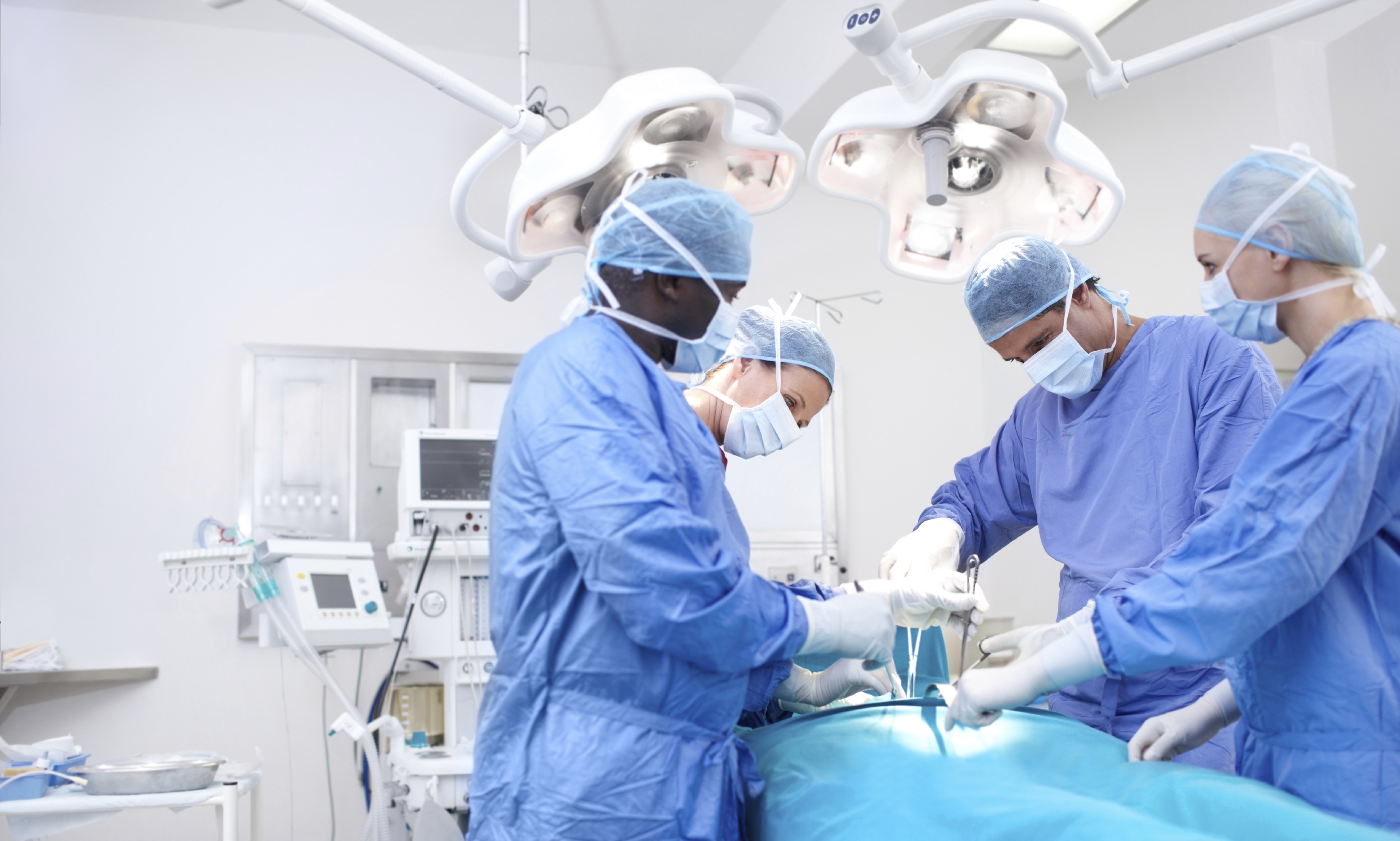What are the types of sarcoma?

What are the types of soft tissue sarcomas?
Liposarcoma
Liposarcoma is the most common type of soft tissue sarcoma. They are most common in adults aged between 30 and 60 years old and are slightly more common in men.
These tumours usually develop in the deep fatty tissue. They’re most commonly found in the upper leg, behind the knee, the groin, the buttock area or behind the organs in the belly (abdominal cavity).
They usually feel solid and bumpy to touch and can spread to nearby parts of the body.
There are different types of liposarcoma, which include:
- Well differentiated liposarcoma (usually a large tumour in the deep tissues of the abdominal cavity, mediastinum and groin region).
- Dedifferentiated liposarcoma (found in similar places to differentiated liposarcoma but the tumour is of higher grade).
- Pleomorphic liposarcoma (most commonly seen on the lower limbs and feet; high grade).
- Myxoid liposarcoma (most commonly seen in the deep soft tissue of limbs, especially behind the knee).
Well differentiated liposarcoma and dedifferentiated liposarcoma are associated with a particular gene alteration involving chromosome 12 (amplification of the MDM2 gene on chromosome 12).
Myxoid liposarcoma is associated with an alteration in a gene known as the DDIT3 gene. This alteration is detected in nearly all myxoid liposarcomas.
There is currently no known recurrent gene alteration associated with pleomorphic liposarcoma.
Myxofibrosarcoma (fibrous tissue)
Myxofibrosarcomas are sarcomas in fibrous tissue (such as your muscles, nerves, blood vessels). They are usually found in the arms or legs or on the trunk of the body but can occur in any fibrous tissue. They can occur around scars, muscles, nerves, tendons, and around the lining of the bone. There is currently no known recurrent specific gene alteration associated with myxofibrosarcoma.
Dermatofibrosarcoma protuberens (DFSP)
This is a sarcoma of superficial soft tissues, usually involving the skin. It’s most common in people aged between 20 and 50, although a small percentage can occur in children. Most commonly it affects the head and neck area, trunk and upper arms and legs. DFSP is characteristically associated with a particular gene alteration involving the COL1A1 gene.
Synovial sarcoma
Synovial sarcoma is usually found in young adults. It is most commonly found in the arms or legs next to a joint (where two bones meet). They are usually found around the joint capsule but rarely spread into the joint itself. The most common site is next to the knee. They are also commonly found near the foot, ankle and hand.
Unlike other soft tissue sarcomas, synovial sarcomas are frequently painful.
Nearly all synovial sarcomas are associated with an alteration in the SS18 gene. This can help to confirm a diagnosis of synovial sarcoma.
Epithelioid sarcomas
Epithelioid sarcoma is divided into classical and proximal types. Classical epithelioid sarcomas are usually found in the hand or foot of young adults. Proximal type epithelioid sarcoma is usually found on the trunk and upper arm and leg areas areas. They appear like small lumps, which sometimes join together. This cancer will spread to lymph nodes in about 1 in 5 cases.
Perivascular epithelioid cell tumours (PEComa)
These are a rare type of soft tissue tumour, which may be found in the lung, intra-abdominal cavity or female genital tract. The majority of these tumours are benign (not cancer), but some show malignant pathological features and as such behave more aggressively.
Rhabdomyosarcomas (striated muscle tumour)
These cancerous muscle tumours are one of the most common types of soft tissue sarcoma. About half of all soft tissue sarcomas found in children are rhabdomyosarcoma. There are many different types, including embryonal, alveolar, botryoid and pleomorphic.
Embryonal rhabdomyosarcoma
This is the most common type of rhabdomyosarcoma, and is diagnosed most often in children under the age of 10. It can be found anywhere in the body, but it is often found in the head and neck area, especially around the eye.
Alveolar rhabdomyosarcoma
This tumour is very fast growing and usually occurs in teenagers and young adults. This type of tumour spreads widely at an early stage. This variant of rhabdomyosarcoma is associated with a particular alteration in a gene known as the FOXO1 gene.
Botryoid rhabdomyosarcoma
These tumours usually occur in children around the age of 7. They generally occur in the pelvic area around the genital region and urinary system.
Pleomorphic rhabdomyosarcoma
This tumour occurs most commonly in people over 30. Because it grows in the muscle, it is usually below the skin surface. Tumours can grow in many different areas within the same muscle and grow very fast. The tumour can spread to other parts of the body in the blood or through other vessels in the body.
Leiomyosarcoma (smooth muscle tumour) and uterine sarcoma
Leiomyosarcomas are another type of muscle tumour which usually occur in the leg, bowel or womb. Symptoms of bowel or womb leiomyosarcomas are bleeding and pain.
Gastrointestinal sarcoma, otherwise known as gastrointestinal stromal tumour (GIST)
GIST develops in tissue around the stomach and intestines. These are relatively common. They are usually treated with surgery alone, but some people require drug treatment before or after they are removed.
Myxoma
Myxomas occur in men and women around the age of 50. They are most often found in the arms and legs. Tumours can be small lumps or very large tumours. They are benign and do not spread to other parts of the body; however, they can spread to tissue close to the tumour.
Solitary fibrous tumour (SFT)
SFT is a tumour of soft tissues that can affect any site in the body including the lining of the lung (pleura), and soft tissues of the limbs, trunk and within the abdominal cavity. Most SFTs are benign (not cancer), but some display more aggressive pathological features and have the potential to spread to other parts of the body. SFTs are associated with a particular gene alteration termed a ‘NAB2-STAT6 gene fusion’, detected in the vast majority of SFTs.
Mesenchymomas
Mesenchymomas can be distributed throughout the body and about 3 in 4 are malignant (cancerous). The tumours are invasive, especially when they are located in the skeletal muscle. Treatment is wide excision surgery, sometimes combined with radiation and or chemotherapy.
Vascular sarcomas (containing many blood vessels)
Epithelioid Hemangioendothelioma
Epithelioid Hemangioendotheliomas are very rare tumours of the blood vessels, which can be cancerous. They are found in men and women but rarely in children. They may be found in the skin, liver or bone.
Angiosarcomas
Angiosarcomas are rare and about a third of the cases occur on the skin and a quarter are found in the soft tissue or organs such as breast, liver, heart and lungs.
Kaposi Sarcoma
This is a vascular tumour that has different clinical subtypes.
The classical type arises within the skin (especially skin over the lower legs) in adults.
The second type can affect children or adults and may involve lymph nodes.
A third type affect patients with retroviral infection and may involve skin, lungs, the digestive tract and the mouth.
All variants of Kaposi sarcoma are associated with a virus known as Human Herpes Virus-8 (HHV8).
Malignant peripheral nerve sheath tumours
Malignant peripheral nerve sheath tumours are usually found in young to middle-aged adults and are more common in males. They occur in the nerves which are not in the brain or spinal cord. These tumours spread to the surrounding soft tissue forming a lumpy tumour. This type of cancer can spread through the bloodstream. These tumours can be painful and tender and may occur in patients who have a syndrome known as neurofibromatosis..
Alveolar soft-part sarcoma
This is a very rare tumour that typically occurs in adolescents and young adults. It is usually a slow-growing tumour found in the arms and legs. This is another soft tissue tumour that is associated with an alteration in a gene known as the TFE3 gene.
Desmoid tumours
These tumours are slow-growing tumours. They tend to spread to nearby tissues but not to other parts of your body. Desmoid tumours may occur on their own without any other known condition (sporadic desmoid) or may occur in association with an underlying genetic condition known as Familial Adenomatosis Polyposis syndrome (hereditary desmoid). Patients with this syndrome may also be at risk for tumours in the lower digestive tract.
What are the types of bone sarcomas?
There are several different types of bone sarcoma. Like soft tissue sarcomas, most are named after the cells in which they grow.
Many cancers that start in the bone (primary bone cancers) are sarcomas. Cancer can also spread to the bone from other parts of your body. This is called secondary or metastatic cancer.
Ewing’s sarcoma
Ewing’s sarcoma is actually several types of sarcomas known as the Ewing’s family of tumours. In Ireland, there are about 20 cases diagnosed each year, generally in children and young adults under the age of 30. It can be found in any bone but is most common in the bones of the lower body such as the pelvis, tibia (shin), fibula (shin) and femur (thigh). The vast majority of Ewing’s sarcoma are associated with an alteration in a gene known as the EWSR1 gene, which is very helpful in confirming the diagnosis on core biopsy.
BCOR associated sarcoma
This is a sarcoma similar to Ewing’s sarcoma, but it is associated with a different gene alteration. The gene alteration with this type of tumour affects a gene known as the BCOR gene.
Chondrosarcoma
Chondrosarcoma develops from the cells that produce cartilage. Less than one-third of bone sarcomas are chondrosarcomas. It is more commonly found among older people than children. Unlike the other bone cancers chondrosarcoma is more often found in the spine and pelvis than in the legs or arms.
Osteosarcoma (osteogenic sarcoma)
Osteosarcoma mainly occurs in adolescents and young adults. It usually affects the large bones of the upper arm (humerus) and the leg (femur and tibia). In children and adolescents, most (80%) of these tumours arise from the bones around the knee. It is slightly more common in males than females. Although osteosarcoma is a common malignant bone tumour, it is still rare with fewer than 30 new cases each year in Ireland.
Parosteal osteosarcoma
Parosteal osteosarcoma is a slow-growing (low grade) tumour that grows on the surface of the bone. It more typically occurs in adults between the ages of 20 and 40. It is most commonly found on the upper leg, behind the knee.
Periosteal osteosarcoma
Like parosteal osteosarcoma, periosteal osteosarcoma is an uncommon tumour that grows on the surface of the bone, most commonly the lower leg. It is a faster growing (high grade) tumour. It occurs in a younger age group.
Multifocal sclerosing osteosarcoma
Multifocal sclerosing osteosarcoma is an extremely rare form of osteosarcoma. It tends to occur in children under 10.
Osteosarcoma of the jaw and skull
Osteosarcoma of the jaw and skull are rare. They typically occur in patients between the ages of 20 and 40. The bones most commonly affected are the mandible (jaw bone) and the maxilla (cheek bone).
Osteosarcoma in Paget’s disease
Paget’s disease is an uncommon non-cancerous condition. It usually occurs in people over the age of 60. About 1 in 100 patients with Paget’s disease develop primary bone sarcoma. The tumours usually start in the pelvis, femur or humerus.
Post-irradiation osteosarcoma (radiation induced)
Radiation-induced osteosarcoma is a rare form of osteosarcoma which occurs in people who have undergone radiation therapy treatments for other cancers. These tumours appear about 10 years after you have had radiation. Post-irradiation osteosarcomas are most commonly found in the spine, pelvis, hips and shoulders.
Extra-osseous tumours
Some types of bone cancer can develop away from the bone. They are called extra-osseous and are usually found in the muscle or skin. There are three types of extra-osseous tumours. They are giant cell tumours, osteosarcomas and Ewing’s sarcoma.
For more information
Phone
1800 200 700



